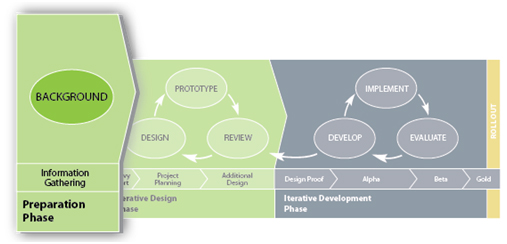Blog
What Does Your e-Learning Yield?
by Deanna Sedivy, studio producer


Getting Prepared to Start
By Allen Interactions | October 14, 2011 | Custom Learning | 0 Comments

by Deanna Sedivy, studio producer
If you are a planner as I am, then you likely develop a plan for almost every endeavor you take on. If you register for a marathon or triathlon, you typically train and log your miles for a few months. When planning a vacation, you research flights schedules, accommodations and excursions. When hosting a party, you decide on a theme, write a guest list, send out invitations and coordinate food and beverages. The point is, when you embark on a large task, you prepare by gathering information to create your plan.
As I mentioned in my last blog post, it took a lot of learning and readjusting in order for me to embrace Dr. Allen’s SAVVY Process, our Successive Approximation approach to project management. Perhaps one of the toughest things for me to accept was to (brace yourself) forget the planning – at least during the initial Preparation Phase. For the ADDIE fans, the Preparation Phase and beginning of the Iterative Design Phase falls into the ‘A’ (Analysis) stage of the ADDIE Process.

The beauty of the SAVVY Process is that it does not require initial over-planning. You should do some basic preparation – learn a little about the client or department, but not prepare too much. Your goal should be to walk into a SAVVY Start a bit “unprepared.”
When you over-plan without the SAVVY Start, you run the risk of developing an initial bias or possibly constructing potential solutions to what the client has perceived as the problem. If you focus on the perceived problem(s), you may put on blinders for the SAVVY Start and, as the saying goes, you won’t be able to see the forest for the trees.
Most of the time, your clients believe they already know what the issue is – and sometimes they do. But, our opportunity, as consultants, is to approach the issue in a fresh way. And by asking the right questions, we often uncover performance challenges that have nothing to do with training.
For further reading on the right questions, I highly recommend a blog post by Ethan Edwards, our chief instructional strategist at Allen Interactions, titled the 5 Questions You Need to Ask.
Those five questions, according to Ethan are:
- What do you expect learners to be able to DO after completing the course that they can’t do now?
- What are the consequences TO THE LEARNER if the learner fails to master the intended outcomes?
- Insist on an active demonstration, a detailed simulation, or an opportunity to directly observe the desired performance.
- What specific performance mistakes do new learners regularly make?
- What tools, resources, job aids, or help do successful performers (or even experts) use to do these tasks?
Through experiencing several SAVVY Starts, I have learned that we, as e-learning professionals, need to put our faith in the SAVVY Process. So, I challenge you to try it with your next training project!
When you get a training request, do some initial research:
- Learn a little bit about the company (or department)
- Read about the ”perceived” problem from the Request For Proposal (RFP), and
- Identify the target audience from client documentation, the RFP and/or initial conversations with the client
Then STOP – I know it is hard, but stop yourself from over-analyzing the potential solutions until you get to the SAVVY Start or project kick-off.
In my next blog, I will discuss the Design Phase, which includes the SAVVY Start, Project Planning and Additional Design.
.png?width=135&height=135&name=ai-symbol-green%20(3).png)
About the Author: Allen Interactions
Comments
Would you like to leave a comment?
Related Blog Posts

By: Allen Interactions | Jun, 2011
Category: Custom Learning

Blog
The Best Content for e-Learning
by Deanna Sedivy, studio producer
By: Allen Interactions | Aug, 2010
Category: Custom Learning

Blog
Best Practices in Creating Scenario-Based e-Learning with Your SMEs
by Deanna Sedivy, studio producer
By: Allen Interactions | Nov, 2013
Category: Custom Learning
